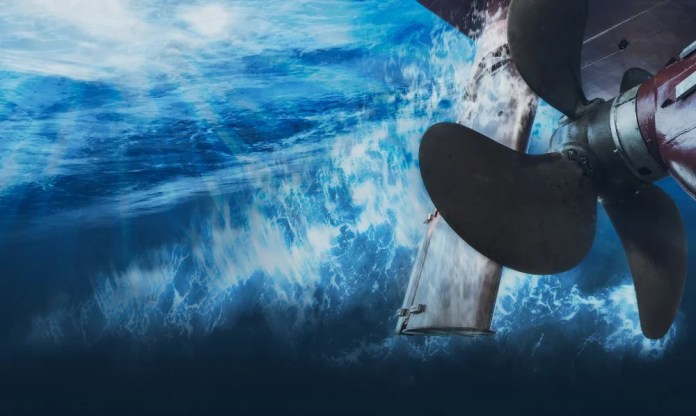A new propeller system could help reduce environmental damage caused by the maritime industry.
The patented PressurePores system has been developed by Oscar Propulsion Limited and the University of Strathclyde.
PressurePores reduce propeller tip vortex cavitation by applying a small number of strategically placed holes in the propeller blades. The addition of these pressure relief holes allows boats to operate with a quieter propeller.
Lars Eikeland, Marine Director at Oscar Propulsion says: “Underwater radiated noise is one of the most adverse environmental by-products of commercial shipping, but unlike other forms of marine pollution, there is currently no international legislation to prevent or reduce this. source of environmental damage.
“Increased noise levels, especially in the low-frequency range, are disorienting marine wildlife and disrupting their communication signals, leading to behavioral changes or extinction. We now have a cost-effective and easy-to-apply solution that prevents this from happening.”
After four years of computational fluid dynamics (CFD) modeling and cavitation tunnel testing during the solution development phase at Strathclyde, the team demonstrated that PressurePores can reduce cavitation volume by nearly 14 percent and URN by up to 10dB.
The results were further verified in tests of the subcavitating propellers on the Princess Royal, a 19m research catamaran operated by Newcastle University. Last year, CFD finite element (FE) propeller stress tests were successfully completed according to the DNV classification society rules.
“We have found the optimal number of holes needed to reduce noise. As long as the correct number of holes are placed in the most effective positions, a cavitation sweet spot can be achieved,” says Eikeland.
“It’s not just about drilling holes in the blades, as this will affect the thrust capability of the propeller. We know exactly where to place the holes for maximum efficiency and optimal noise reduction.”
Propeller cavitation can generate up to 188 dB of radiated noise underwater and can be heard by marine wildlife 100 miles away.
According to the US National Oceanic and Atmospheric Administration, anything above 160 dB can pose a significant risk to marine life.

Commenting on the impact noise has on marine life, Eikeland says: “Noise levels in the ocean due to maritime activity have been increasing for decades and are expected to double by 2030. URN can cause irreversible damage to the marine life through stress, habitat displacement, reduced reproduction, loss of feeding opportunities and even death, greatly changing the marine ecosystem and affecting biodiversity.
Eikeland adds: “PressurePores have a significant mitigating effect on URN and propeller cavitation and can be incorporated into new propellers or retrofitted to existing propellers, either dry-docked or possibly in-water.”
Oscar Propulsions’ technology is said to be suitable for all types of vessels, particularly naval vessels, fishing fleets, offshore vessels and cruise ships and research vessels operating in sensitive environments. The researchers say the technology can be applied to all kinds of propellers, including pods and thrusters.
In April, MIN reported that ‘quiet blade’ propeller technology company Sharrow Marine had secured funding from Dolby Family Ventures for a new propeller that promises to deliver safety, stability, improved glide and drift performance while reducing vibration, cavitation and noise.






